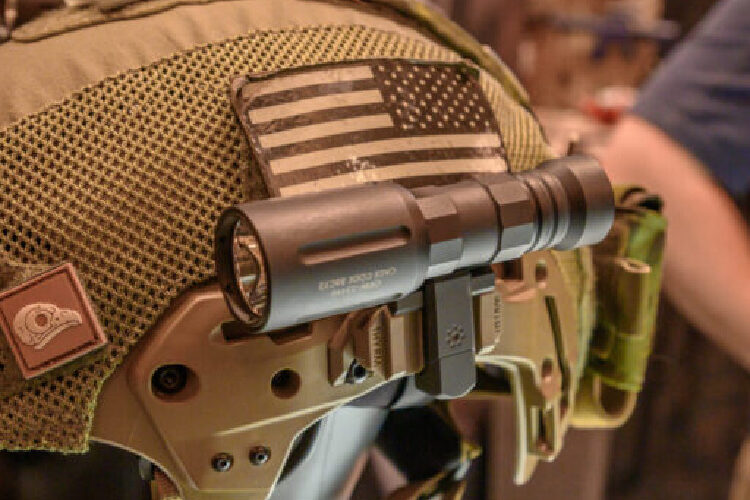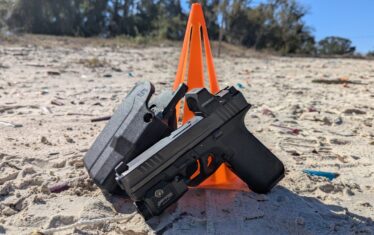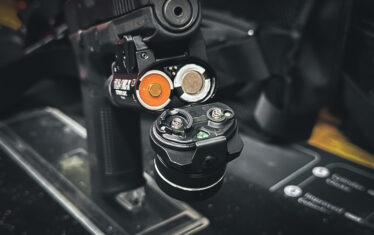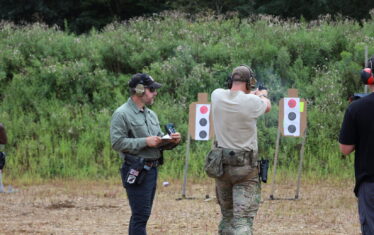As technology advances so do the requirements of the military and police. With those advancements, we have an increasing number of items being strapped to rifles, gear, and helmets. I checked out a large swath of what SHOT Show 2024 had to offer regarding helmet-mounted accessories. Here’s a look at what I found.
Protection and Video
You only get one set of ears, eyes, and lungs, and protecting them should be your top priority. Also, protecting yourself from potential litigation through video documentation is becoming more prevalent. Here’s a look at what I found along those lines.
Safariland Liberator Hearing Protection With Comms

The Safariland Liberator IV was a substantial upgrade compared to the first-generation Liberators. The sound amplification has been reworked and the battery compartment can use a CR123A or 2x AAA’s. Not only that but you no longer need to use a tool to change the battery. This is essentially the Liberator HP 2.0 with added comms (you can send your Liberators in to be upgraded to add comms if you need them).
The Adaptive Suspension Helmet Mount that is pictured above can be ordered with your Liberators or purchased separately. They come in either Ops-Core or Team Wendy rail mounts. They have a stowed and worn click setting to either have them on your helmet or locked onto your ears. They’re highly adjustable to adapt to wherever you mount them on the side rails. You can read my thoughts on the Liberator HP 2.0 and Helmet Mount here.
Avon Protection Modular Integrated Tactical Respirator (MITR)
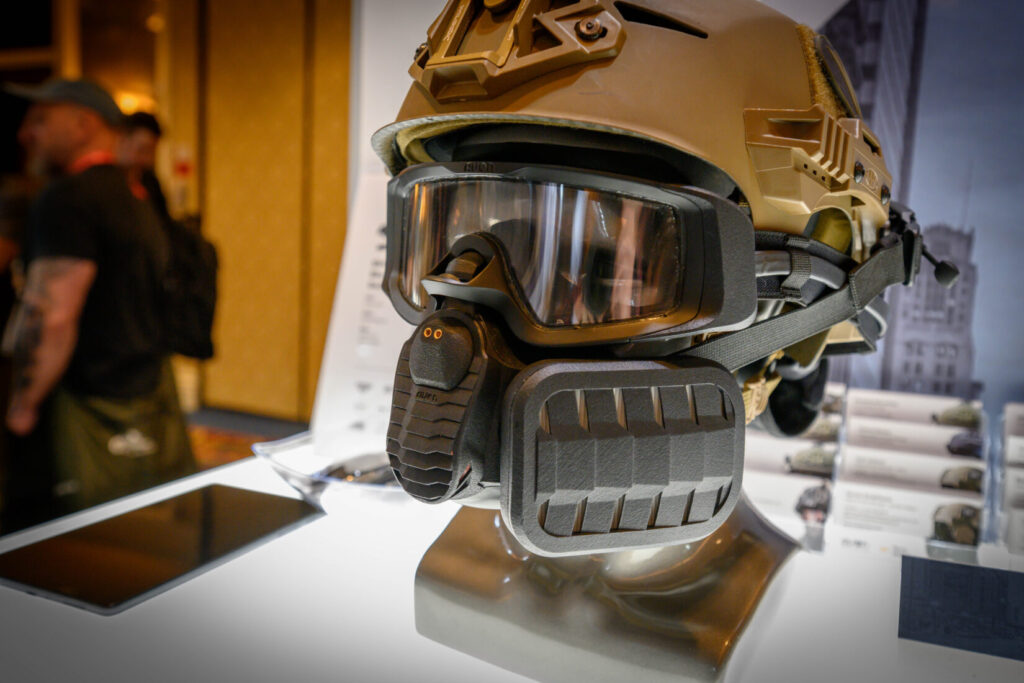
While not released yet, I was impressed with the features of the Avon Protection Modular Integrated Tactical Respirator (MiTR). The MiTR is a combination of tactical respirator and air-purifying goggles.
Unfortunately, people have long ignored the potential of negative health effects that can result from things like firing firearms in enclosed spaces and police doing busts on drug labs. The latter has been further exacerbated by the rise of fentanyl — it takes such a small amount of fentanyl to affect you, and just a tiny bit more can cause an overdose.
The respirator will help keep small particles, oils, and heavy metals from getting into your lungs. The respirator cartridge can be swapped sides, depending on what your dominant hand is for shooting.
The goggles are powered air purifying, meaning they also clean the air coming in since your eyes are a mucus membrane and a big source of absorption.
After leaving the Army, I became an aircraft structures technician and respirators are part of our day-to-day life. You want to keep as much badness from hitting your lungs and blood and this looks like a great option for trigger pullers.
Mohoc 2 Streaming Helmet Camera
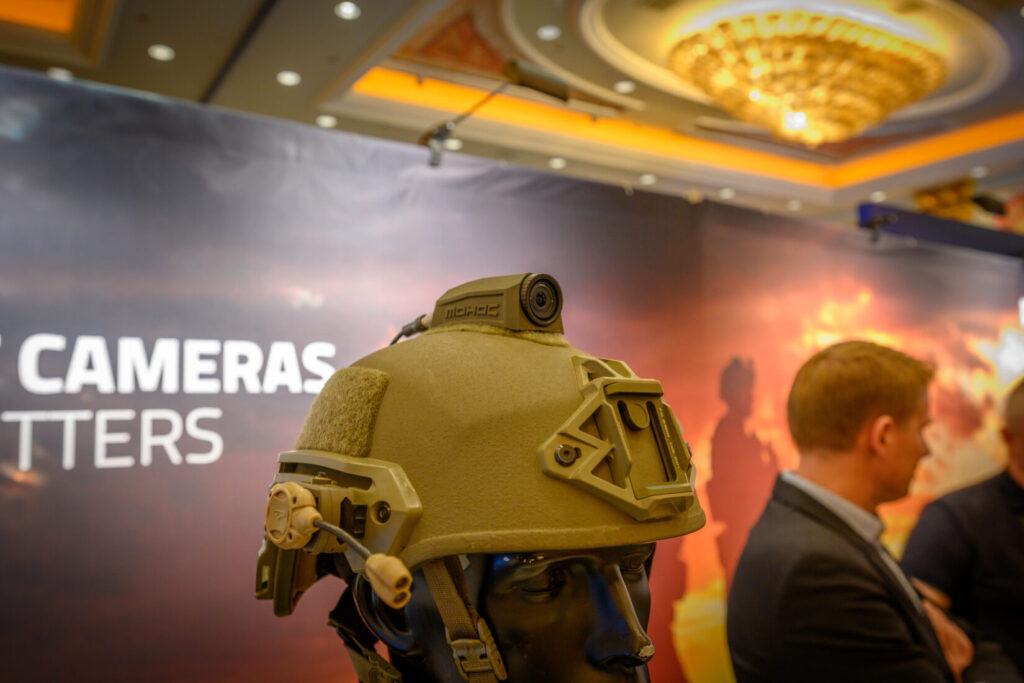
MOHOC has been around for quite a while at this point. The new version of their helmet-mounted camera the MOHOC 2 is now released, with a few changes from the first version.
First, you might be wondering why this is in the protection category. Cameras are a great asset in modern times. They are used to protect the police or soldiers wearing them from unfounded litigious individuals, as well as protecting citizens from excessive use of force.
The MOHOC 2 is smaller than the first version and uses mil-spec ports and cables so that it can easily integrate with current radio gear. This allows commanders to be able to get up-to-date info through video streams in the field. Along with these changes, the MOHOC 2 boasts 20x improved low light sensitivity.
Night Vision and mounts
Eating carrots only gets you so far when it comes to seeing what bumps in the night. We checked out a bunch of night vision and accessories at the show that aim to better tame the cold dark expanse of the night.
Steele Industries NightHawk Night Vision Goggles
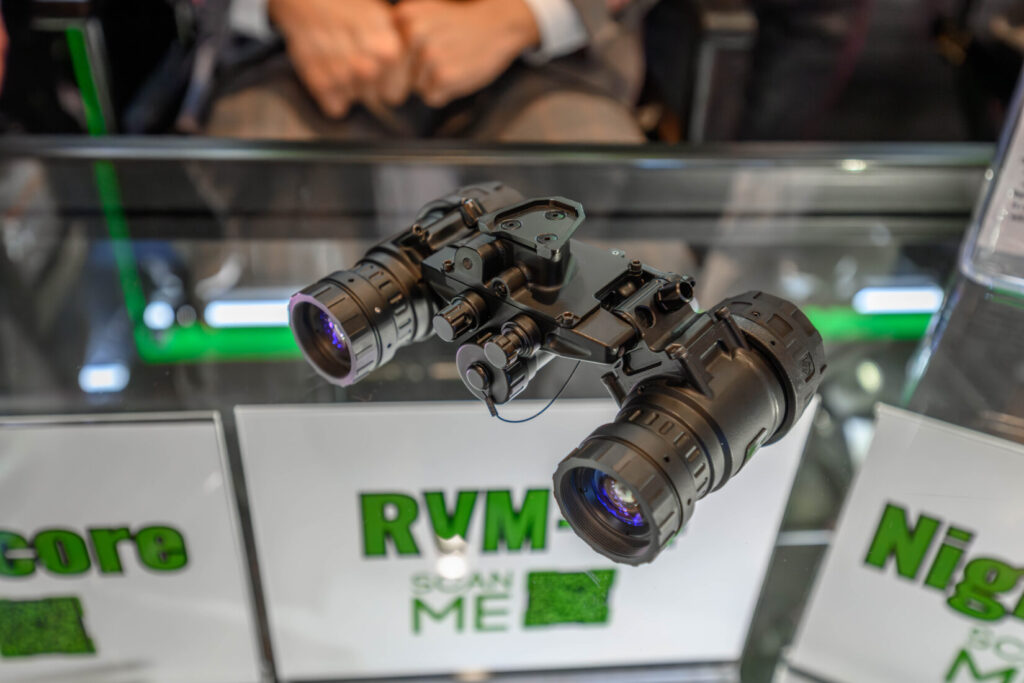
Steele Industries had the NightHawk on display at the booth and we were impressed with the overbuilt nature of the design. Typically when it comes to things you mount on your helmet, you want to go for the least amount of weight possible. However, you need to balance weight and durability. Certain end users will take a couple of extra ounces to know that their gear will continue to perform. These are lighter than a PVS-15.
The NightHawk is made of 7075 Aluminum and is submersible to 66ft. The hinge looks sufficiently robust and there should be no reason to worry about it cracking unless you take a pretty hard fall.
It operates on a single CR123A with 20+ hours of life or can be run with an external battery. The housing itself is designed with an IR illuminator and manual gain, allowing it to utilize a wide variety of tubes. It has all of the standard stuff you expect from a binocular housing like automatic pod shutoff (when you swing one of the eyepieces out of the way it cuts power to that tube).
These are not out yet but they say they will be released soon.
Low Light Innovations MH-1 Magnesium Housing
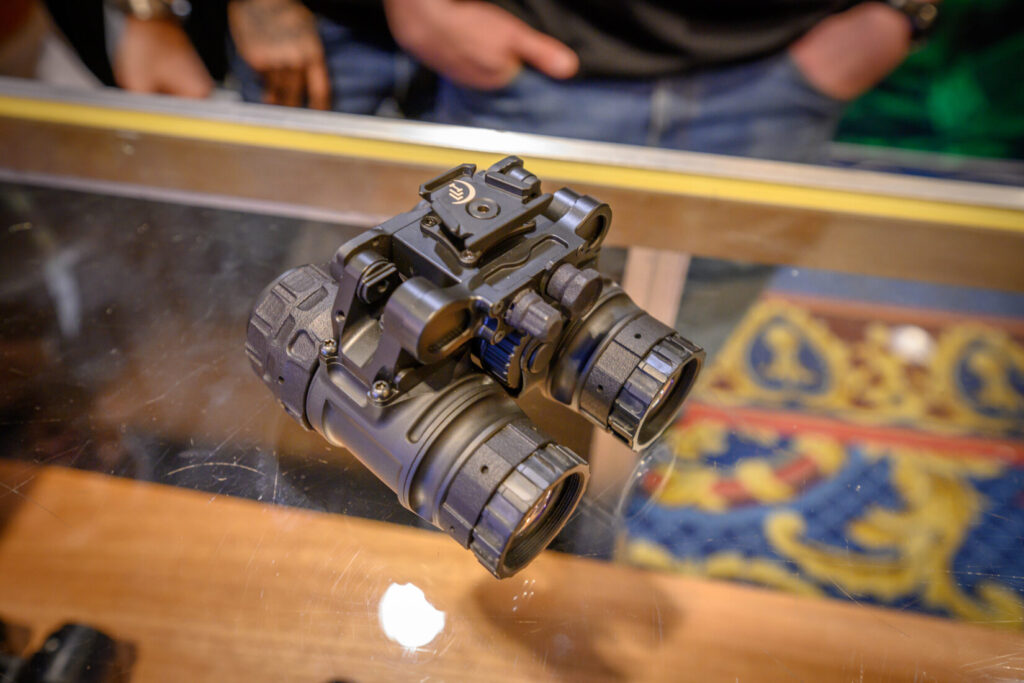
It is interesting to see companies trying out different ideas and Low Light Innovations certainly did that with the MH-1 Magnesium Housing.
Why would I want a night vision housing made of a health supplement? Magnesium is considerably lighter than aluminum for the same-sized object. While aluminum is stronger, the use of magnesium allows you to strengthen/thicken sections of the housing to meet the same strength while providing a fairly light package. They also used titanium alloys in the design for additional weight savings.
With lightweight optics (the glass bits at the front and back of the unit) the build can come in around 15.9 ounces. This means with the addition of things like an IRIS or Thermals, which we will talk about in a bit, you won’t be causing any unnecessary neck strain. Powered by AA, CR123A or external pack the modularity of the unit even allows you to break it down into two monoculars using their modular bridge system.
The Canadian sales rep lives close to me so I will likely get some more hands-on with the unit in the future. These haven’t been released yet but hopefully, we hear more about a release date soon.
Nocturn Industries TAPB (Tanto Articulating Powered Bridge) “Daisho”
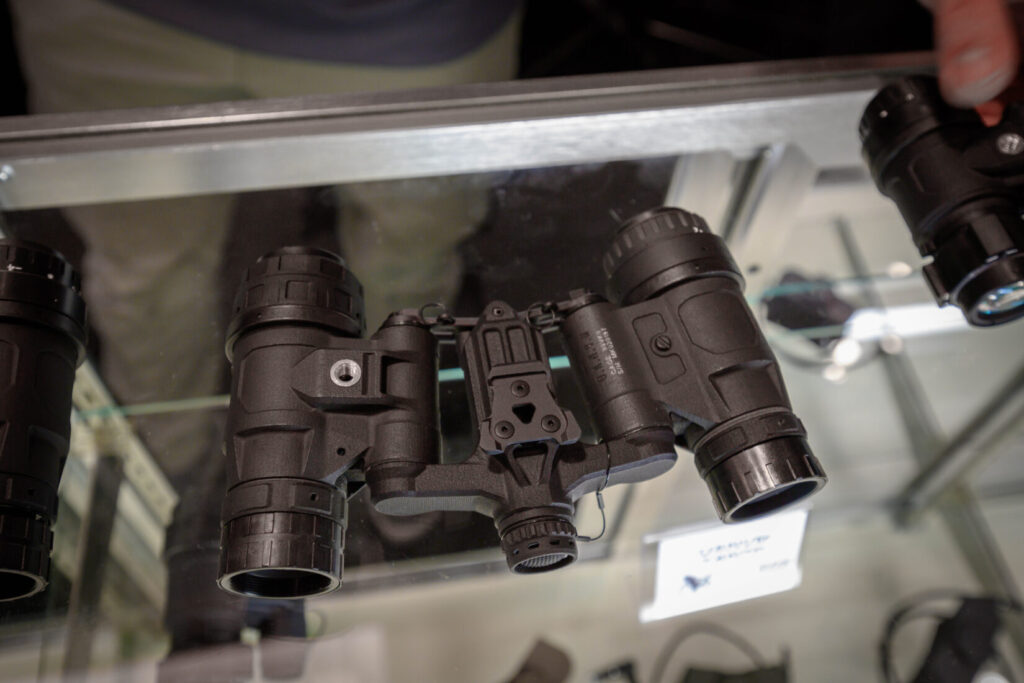
I was very interested to check out the Nocturn Industries Tanto Articulating Powered Bridge “Daisho” since I currently have a Tanto on my helmet. The Daisho Bridge allows you to couple two Tanto monoculars together to form a binocular unit that can easily be swapped back into monoculars. This provides a huge amount of versatility in how you want to use your setup. You can start with just a singular monocular and upgrade as budget permits. Or as in my case, utilize a dedicated thermal on one eye with night vision on the other if you don’t need binoculars.
The Bridge mounts into the battery ports on both Tantos and utilizes the screw insert at the other end of the housing. Pictured is their new model that provides a bit more field of view as it cants the objective lends outwards slightly. The Tanto monoculars shut off when in the Daisho gain pod, which was some forward thinking when designing the bridge and the monocular itself.
Safran Optics TAD (Thermal Augmentation Device)
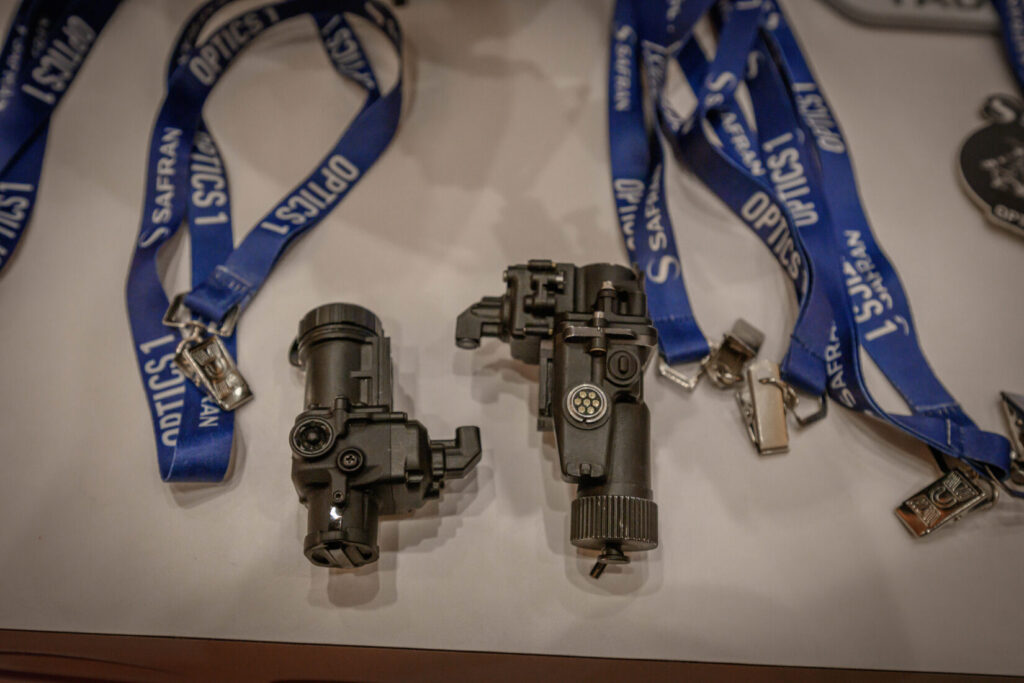
Earlier, I mentioned minimizing the weight hanging off the front of your helmet to reduce neck strain. That’s where this device comes in.
Clip-on thermal imaging has become a pretty big industry in itself. Many of the units are fairly bulky, which means more added weight on your helmet. You can see how small it is compared to the older ECOTI in the picture above.
A clip-on thermal imager converts heat signatures to light, which is projected at the front of the night vision lens. This gives a bright ghostly outline to heat signatures in the image.
Basically, it runs heat through a digital process and outputs it in the form of light so the analog tube in the night vision knows what it is. You end up being able to see things that might not have been visible to you before. This is especially useful in extreme low light, allowing for easy human identification. Combining night vision and thermal also has the added benefit of being able to aim with an IR laser.
The Safran Optics Thermal Augmentation Device, while not new, has not been released for sale just yet.
GSCI GR8 Low Profile Night Vision Mount
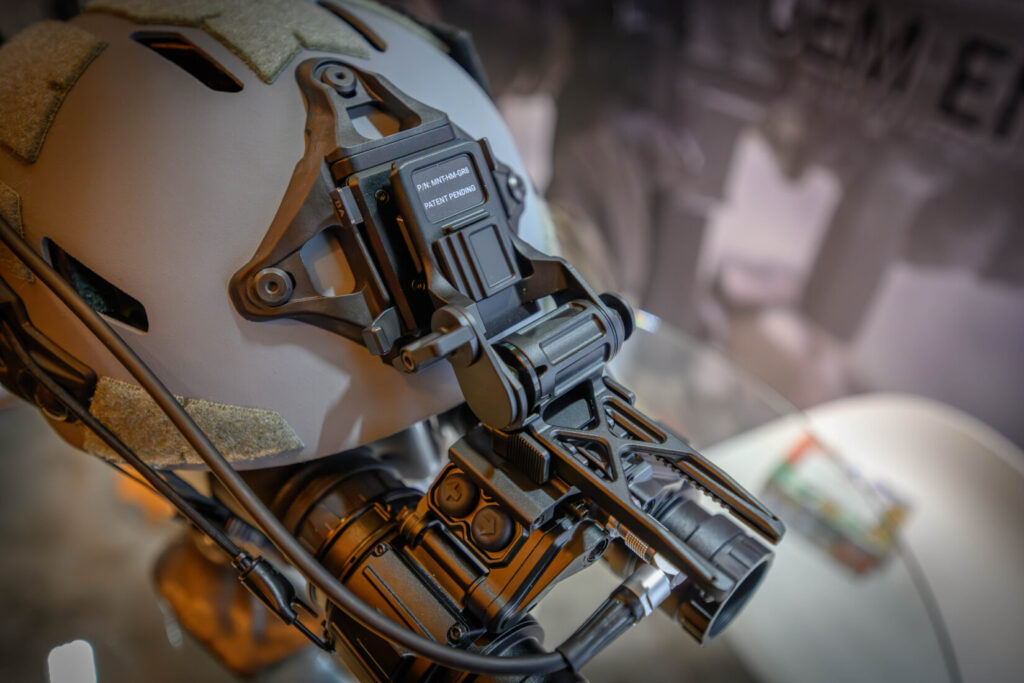
General Starlight Company Inc., or GSCI, is based out of Ontario Canada which for our international readers means ITAR is not a thing. They had their GR8 mounted on a helmet and I gotta say, it’s looking mighty slim.
As you can see in the picture, it has been highly skeletonized to remove any unneccesary weight. The mount provides eight position adjustments, which is likely where the 8 in the name comes from. This means that you can set it up for your eyes exactly as you want.
Pictured above has the dovetail mount, which is the current standard. If you are still doing things old school, it comes with the bayonet mount too, although I recommend you upgrade to dovetail as it is lighter and sturdier.
WILCOX G24P Night Vision Mount
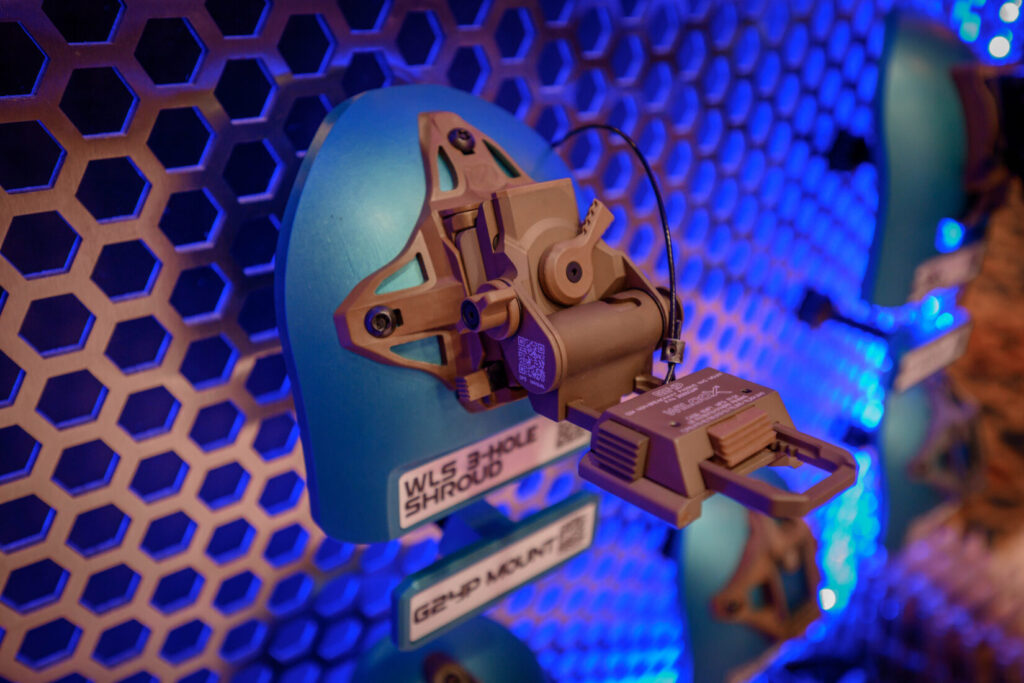
Much like several other items on this list, the Wilcox G24P has not been released just yet. Pretty much everything about the mount remains the same as what we know and love, with the addition of a third position for the night vision to sit at.
With the standard G24, you have fully up (stowed) or down (in use). The new position allows you to pop your night vision slightly above your eyeline. This allows you to use your eyes and when it comes time to use the night vision, it is just a short move away. This is better for speed, compared to flipping the pods out on binocular night vision.
While this is not a feature that will have me instantly selling my standard G24, the military and police users who requested this feature will be happy.
TASK LIGHTING
It doesn’t matter if you are reading a map or need supplemental lighting in a building or tunnel, LED bulbs are likely going to get you there — either in the infrared spectrum or visible.
Thyrm VariArc Helmet Mount for Lights
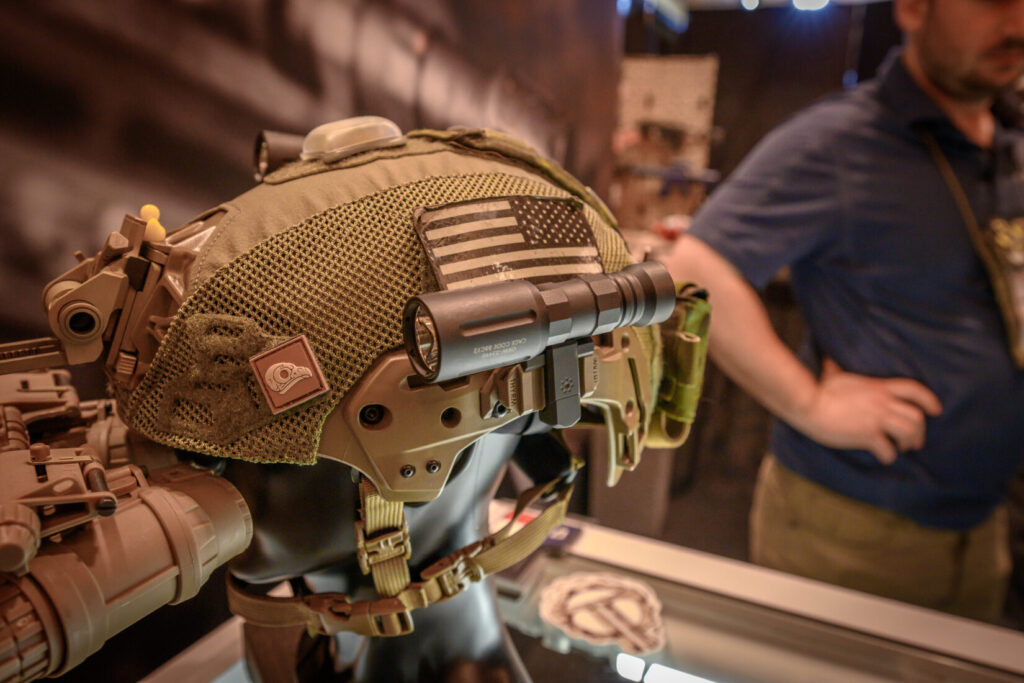
The Thyrm VariArc is a helmet attachment designed to provide some lighting versatility. It comes in three different variations: Team Wendy, Ops-Core, and M-LOK. With each of those variations, you get the Picatinny rail as pictured as well as a Surefire Scout mount, if you prefer to go that way. This provides multiple ways to attach a rifle or pistol light to your helmet.
The name of the product is VariArc because you can rotate the light around on the mount. This allows it to be used as a forward-facing spotlight, task light, or umbrella lighting. For those who don’t know, umbrella lighting involves pointing it upwards so that the spill bounces off a white roof, illuminating the room like an umbrella does for a flash in photography.
Streamlight Sidewinder Stalk
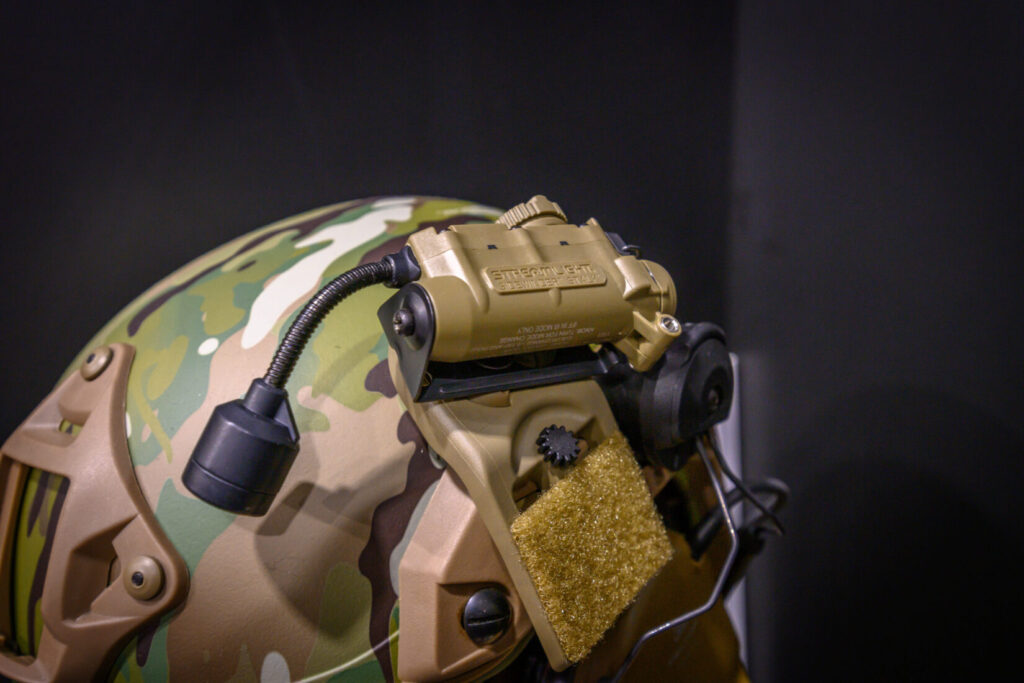
The Streamlight Sidewinder Stalk is fairly new to the market, but unlike many things on this list, it is available for purchase. The Stalk has red, green, blue, white and IR LEDs in the head of the flexible shaft, providing lighting for whatever task you might be doing. For instance, when looking for blood or reading a map, red is not the best option. The unit can take CR123A batteries as well as AA, just know with AA you take a slight performance hit.
The Stalk has a massive amount of accessories for helmet mounting including the NVG shroud. The Stalk could also be listed in our next category of helmet accessories, as the top dial has an IR strobe built into it. You can even activate the strobe as well as the IR LED in the Stalks head at the same time if need be.
Princeton Tec Charge X
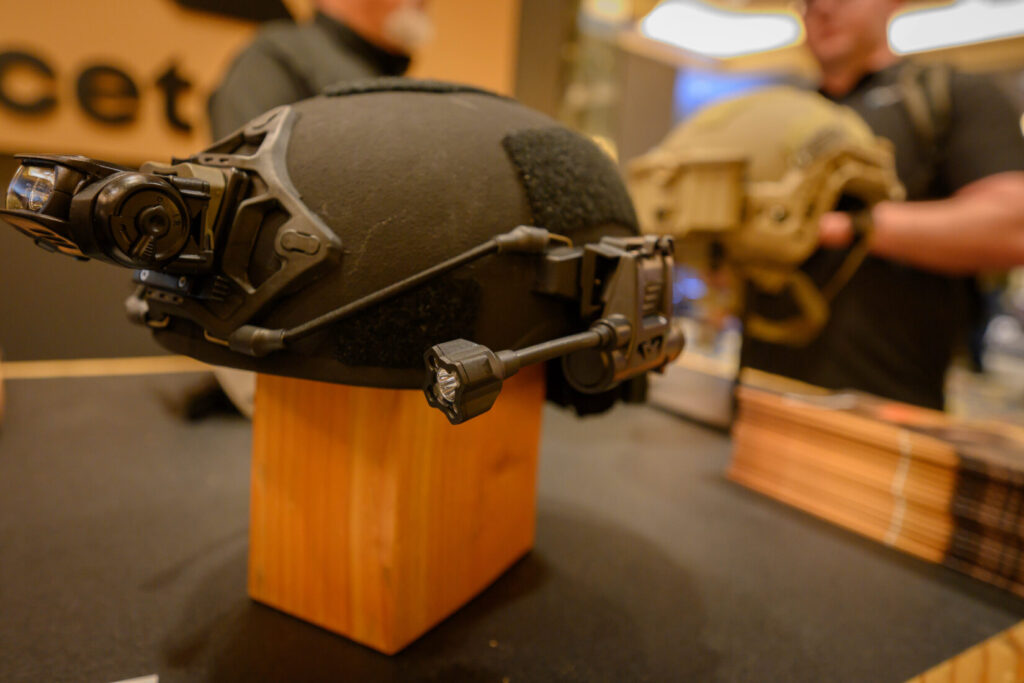
The Princeton Tec Charge X has not been released just yet but it is the newest generation of the Charge. The Charge X gets the X moniker from the X-shaped LED pattern on the head. The head has red, green, blue, white, and IR LEDs on it. You can program the order the colored LEDs activate to have what you use most appear first.
The neck has an extra heat shrink put over it for added protection and more rigidity. Much like the Streamlight Sidewinder Stalk the Charge X adds the ability to use CR123A or AA batteries which is another upgrade to the Pro.
Like the other Princeton Tec helmet lights, the Charge X comes with a huge pile of attachments in the package to make sure you can adapt it to whatever you are wearing, including your vest, various helmet rails, and even a mount for helmets without a standard mounting interface.
Princeton Tec Vizz 550 RGB MPLS
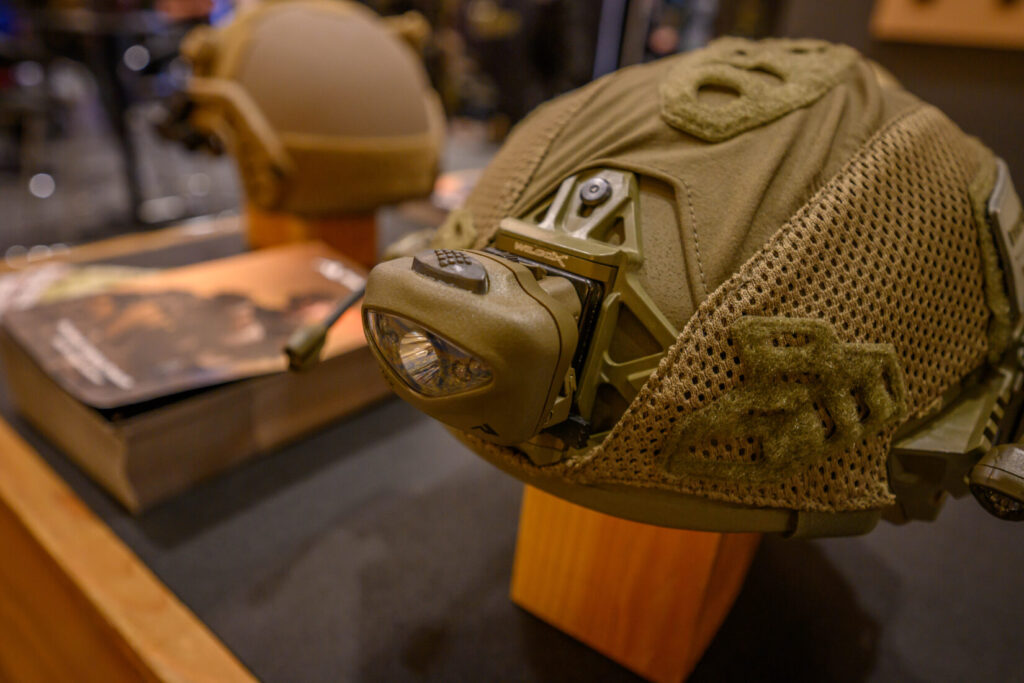
Not everyone is high-speed low drag and needs night vision on their helmet. A large percentage of the military, police, and civilian users just need some form of task lighting.
Gone are the days of needing to run the headband of your headlamp around the shell of your helmet. The Princeton Tec Vizz 550 RGB MPLS is for sale now and if you order the MPLS version of it, you get an NVG Shroud mount. The mount that is used for the standard headband can also be used with any 1″ standard webbing like the PALS webbing of your vest.
The White LED is dimmable to get the needed level of illumination for the job at hand. If you need to use red light in the field, the VIZZ 550 RGB comes with two red LEDs to provide a bit more illumination. The headlamp also includes a single green and blue LED and is powered by three AAA batteries.
Nextorch rStar Helmet Light
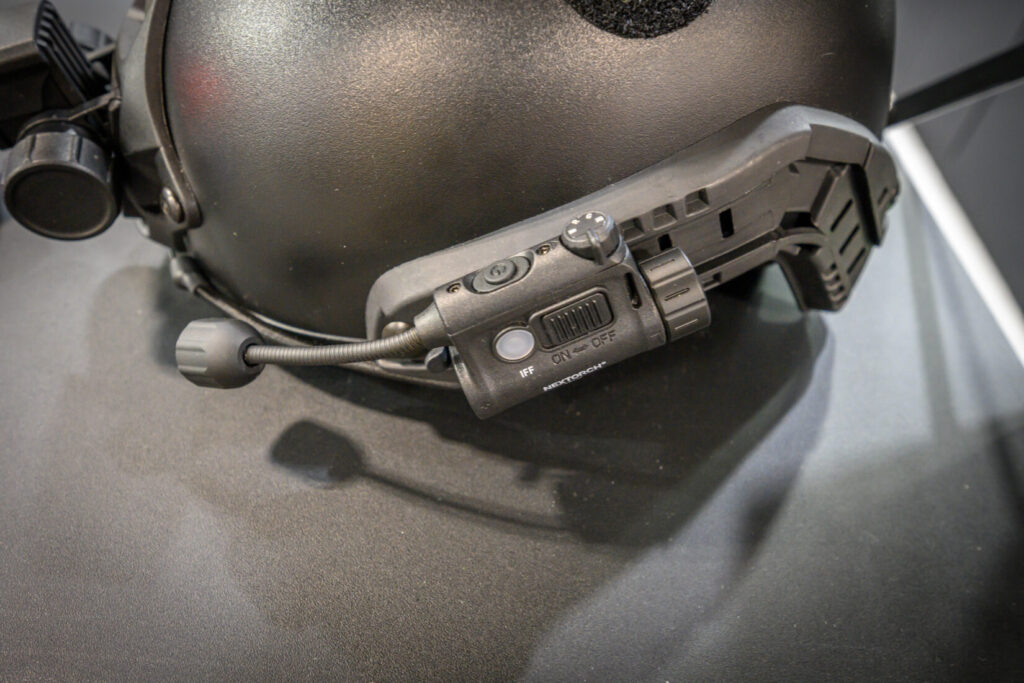
The Nextorch rStar is a small feature-packed helmet light with a built-in IFF IR strobe on the side. The unit has three separate switches to control the various features. The large sliding button on the side is used to turn the IR Strobe on or off. On top, you have a mode-selection wheel and a power button.
The unit has 4 LED options for lighting. You get a white light, red, green, and IR LED for night vision users.
With the light, you get an Ops-Core Arc rail attachment, two-way webbing attachment, and a strip of velcro to use with the webbing adapter to stick it elsewhere. Sadly at this time, they do not make a Team Wendy attachment for this light. The light is offered in black only at this time also.
Helmet Strobes and Beacons
The ability to identify friendly forces at night in combat has become more important than ever with both sides of combat now making use of night vision. C
Adventure Tactical Trilobyte Gen 4
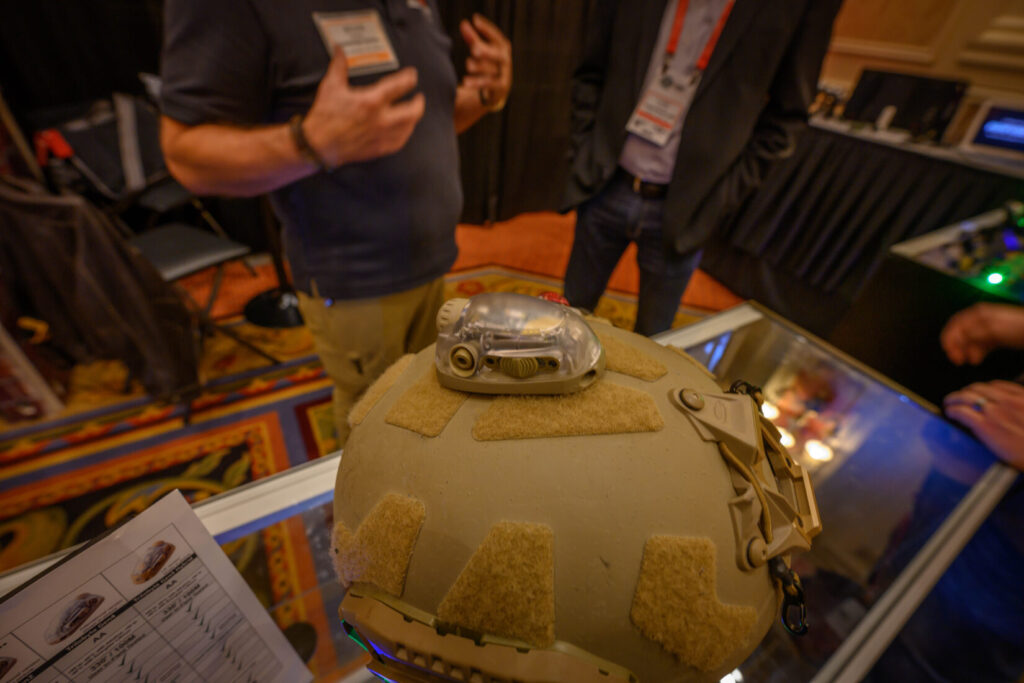
Adventure Tactical has been around for ages. You likely know them for the VIP strobe that was super popular years ago. Their newest generation of helmet strobe is called the Triolbyte, which boasts an interesting feature set. You can program the flashing pattern using an IR or white light source, including the sun. This allows different units to utilize different flash patterns for identification. You can even program Morse code into the flash pattern. You can sync the flashing of multiple units of the same generation so that they all flash in tandem. The synced flash provides better friendly identification and helps differentiate between strobes and muzzle flashes at a distance.
The unit also has the ability to detect incoming IR lasers and provide a vibratory warning and flashing light of IR or white, depending on what setting you are in. I feel this will be a feature we see more and more, and we could even see the integration of directional alarms in the future.
CorE Survival Hel-Star F2

Core Survival has iterated on the Hel-Star line repeatedly over the years and one of the newest versions is the Hel-Star F2. This addition adds the ability to detect incoming lasers to the venerable Hel-Star 6.
The unit has been tested out to 800m. When hit with an infrared laser, it produces a vibration on the helmet as well as an IR light to let friends know you are with them. The pigtail coming from the back of the strobe is meant to be stashed inside the helmet and that’s what gives the vibratory alarm that either a friend or foe might be lasing you.
The light has both overt and covert lighting options and can be programmed using their Program Interface Module or (PIM). This allows unit identification. Since strobes are becoming a battlefield necessity with everyone and their dog using them — literally dogs have strobes now also — being able to know the flashing pattern for allies or the unit that you are providing air support or cover fire for is invaluable.
HRT Tactical Helmet Strobe

The HRT Tactical Helmet strobe won’t be released until later this year but has some interesting features for its price. They aim to release this strobe at around $50 USD, which is by far on the cheaper end of the helmet strobe market.
The strobe will include IR, red, green, and white lights. It’s programmable and vibrates on activation so you know what setting you have selected after pressing the big HRT logo button on top. The feature that I have never seen before is the use of a magnetically charged internal battery. The unit will need to be removed from the helmet in order to charge. You can hear them talk about it in this short video.





